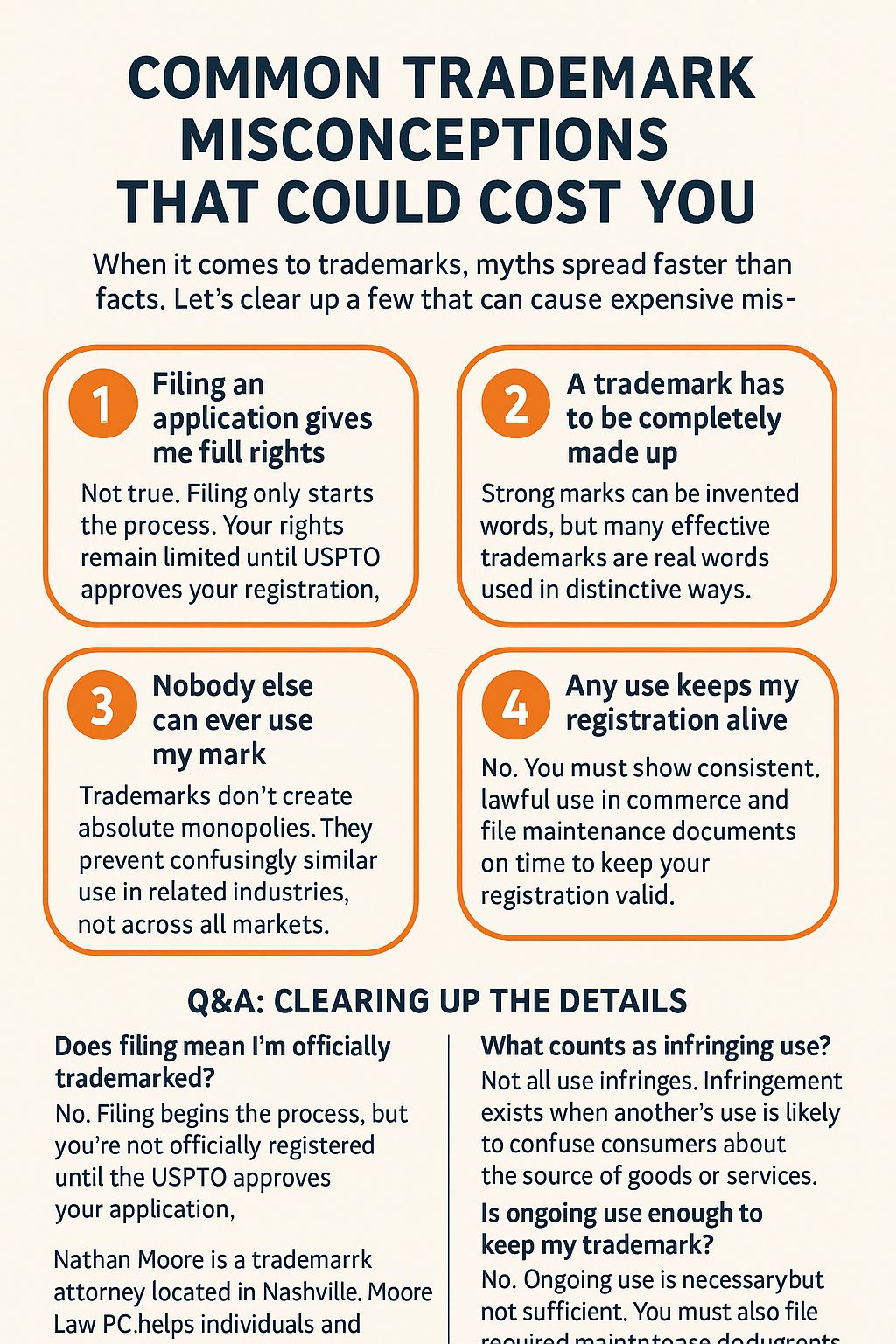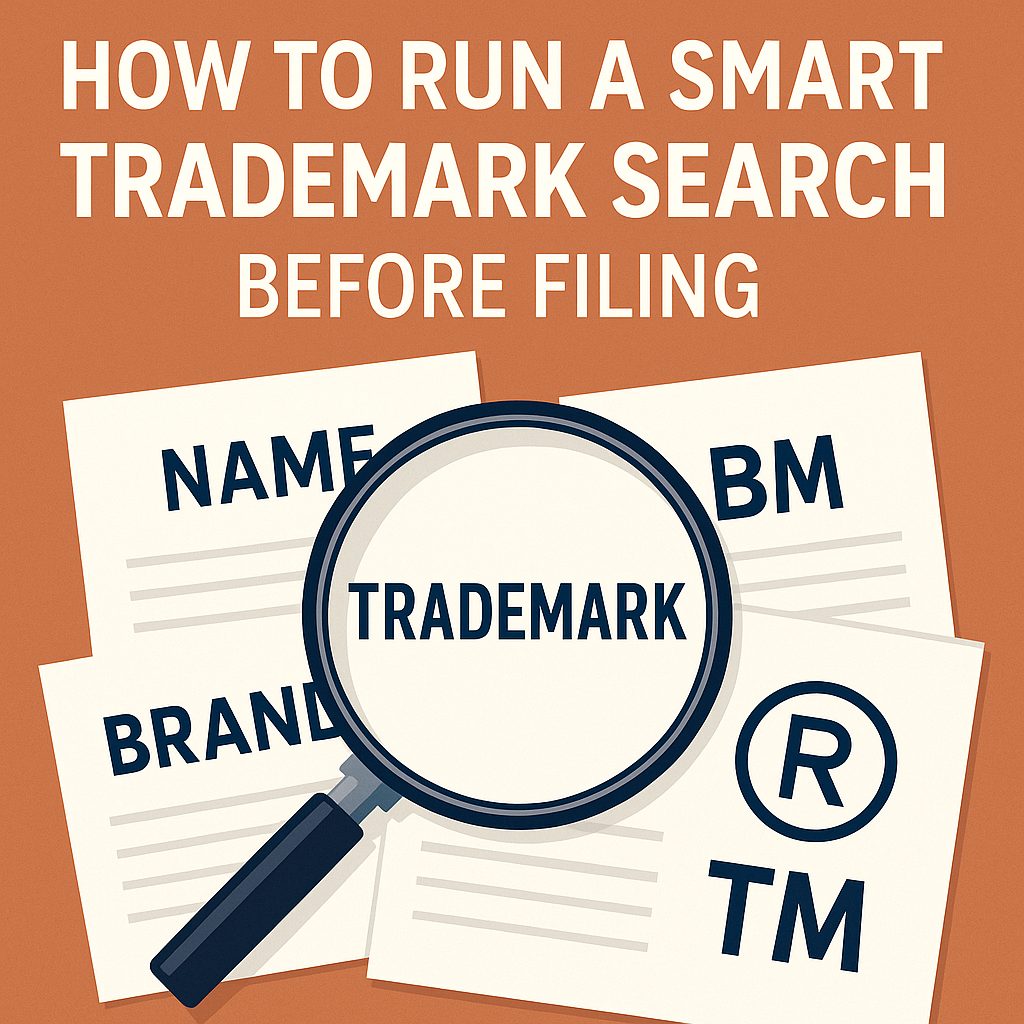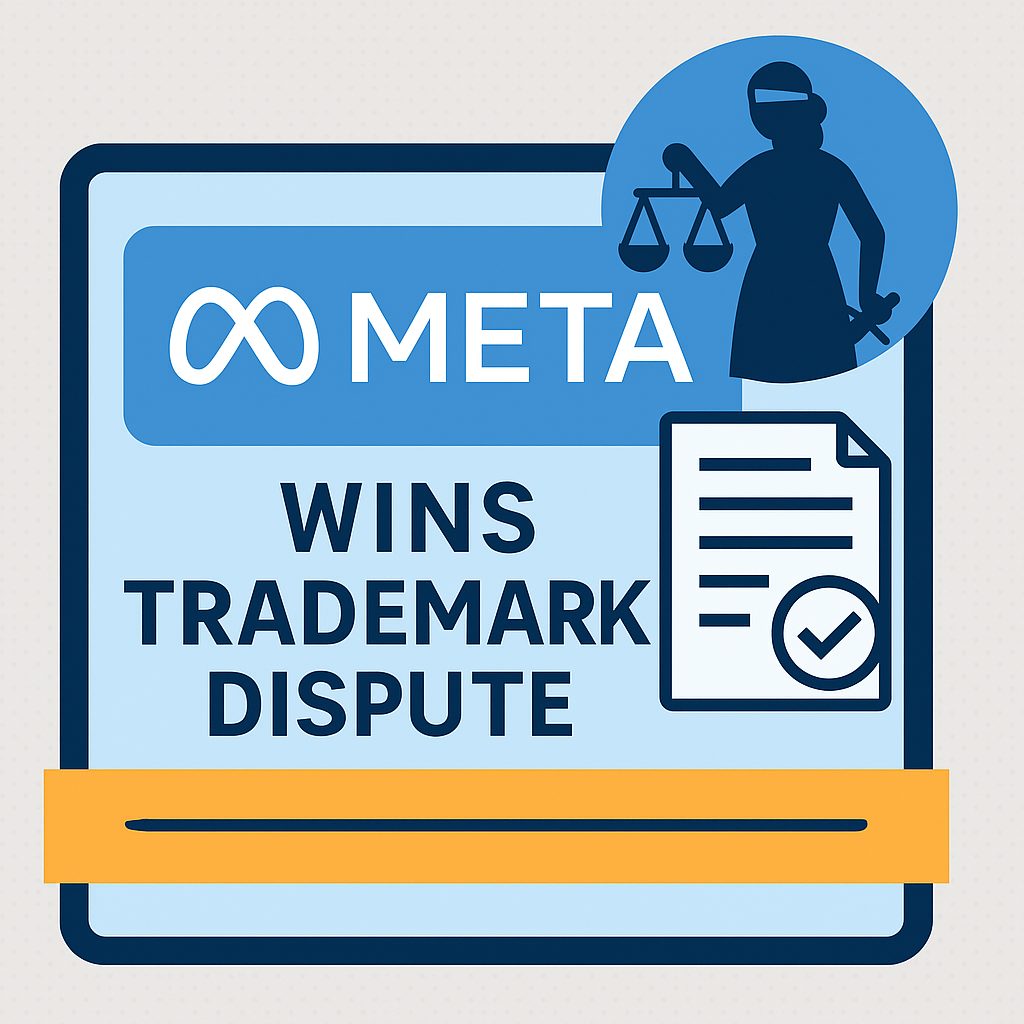Your cart is currently empty!
Tag: trademarks

Clearing Up Common Trademark Misconceptions
Trademarks protect reputation and reduce confusion. But myths about what trademarks do—and do not do—often lead to costly mistakes. Here is a fast, plain-English reset so you can file and maintain your rights with confidence. Myth 1: Filing an application gives me full rights False. Filing starts the process, but you are not federally registered…

How to Run a Smart Trademark Search Before Filing
Before you invest in a new name or logo, search first. A proper trademark search goes beyond a quick web query. It looks at federal and state registers, plus unregistered (common-law) uses in the marketplace. That extra diligence can prevent refusals, disputes, and costly rebrands. Why Search Matters Avoid USPTO refusals: The Office will refuse…

Specimens 101: The Most Common USPTO Refusal—and How to Avoid It
Most trademark applications fail for one simple reason: the specimen doesn’t prove real-world use. A specimen is your evidence—what the customer sees when they meet your brand in the wild. Get it right, and your filing moves. Get it wrong, and you lose time and money. What the USPTO Wants For goods: the mark on…

Hugo Boss vs. Boss Pets: A Trademark Crisis for the Littlest “Boss”
When a global fashion giant meets local pet brand, trademark drama unfolds. Hugo Boss has ordered Liverpool-based Boss Pets to take down its website, claiming trademark infringement. Here’s what every business should learn from this clash over the word “Boss.” What’s Behind the Lawsuit? Hugo Boss has alleged that Boss Pets’ use of “Boss” infringes…




